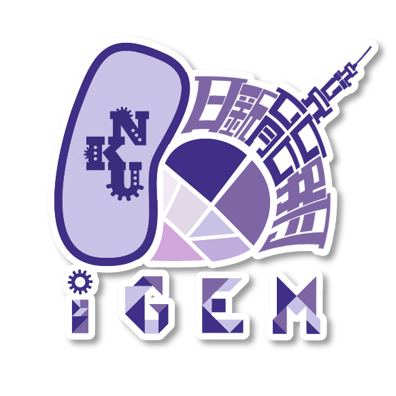Proof of Concept
Abstract
This summer, our team is aiming to engineer bacteria for supplement and absorption of autoinducer-2 (AI-2) in the natural environment. We successfully designed two cell machines: AI-2 Supplier is the cell machine which can directly supply and enrich the AI-2 molecule while AI-2 Consumer is another cell machine which can sense, absorb and degrade the AI-2 in the environment. We validated that AI-2 Controller works as expected by qPCR, HPLC and AI-2 Response Device. We also further demonstrated that our AI-2 controllers have the ability to manipulate biofilm formation process by 'quenching' or 'ignite' AI-2 signal in the environment.
Design of modular QS elements: AI-2 Supplier
There are mainly 2 steps involved in the process of AI-2 production in bacteria cells. AI-2 is produced from S-adenosylhomocysteine (SAH) by Mtn and LuxS and accumulates extracellularly with cell density. In our project, we cloned mtn, luxS into the plasmid pTrcHisB to enable overexpression of proteins associated with these AI-2 production reactions in Escherichia coli. Two AI-2 Supplier devices, pLuxS and pLuxSMtn were successfully constructed using homologous recombination method.
During the construction, all intermediate constructs and final plasmids were immediately verified by restriction enzyme digestion verification and/or sequencing. As you can see from Fig. 1, we obtained gel bands at expected position of AI-2 Controller devices, pLuxS and pLuxSMtn.

Fig. 1: Restriction enzyme digestion verification of pLuxS (left) and pLuxSMtn (right)
Device pLuxS and pLuxSMtn were constructed by overexpression of the components responsible for AI-2 production (luxS, mtn). To verify whether the device realized the function as expected, qPCR and SDS-PAGE experiments were conducted. As shown in Fig. 2 and Fig. 3, two devices overexpressed luxS and mtn mRNA about 4 times than control group, pTrcHisB. Also in SDS-PAGE experiment, you can see the overexpression of LuxS and Mtn protein.

Fig. 2: qPCR result of luxS gene expression in Device pLuxS

Fig. 3: qPCR result of luxS (left) gene and mtn (right) gene expression in Device pLuxS

Fig. 4: SDS-PAGE result of Device pLuxS (left) and pLuxSMtn (right)
To further validate whether AI-2 Consumer Devices can actually increase AI-2 environmental AI-2 concentration, we measured the AI-2 concentration in the culture after 3 h induction of IPTG. As illustrated in Fig. 5, in the culture medium of AI-2 Supplier pLuxS and pLuxSMtn, AI-2 concentration was both increased significantly than control group. The result shows that, as expected, AI-2 concentration in the culture of AI-2 Supplier pLuxSMtn is much more than AI-2 Supplier pLuxS.

Fig. 5: Relative concentration of AI-2 after 3 h induction of IPTG
Design of modular QS elements: AI-2 Consumer
There are mainly three steps involved in the processing of AI-2 from the extracellular environment. (i) uptake, primarily through the LsrACDB transporter, (ii) LsrK-mediated phosphorylation of AI-2 (to AI-2P), which blocks export back to the extracellular milieu so that accumulated AI-2P binds the regulatory protein LsrR, derepressing the Lsr transporter as well as enzymes, LsrF and LsrG, and (iii) degradation of AI-2P through the two step process from isomerase LsrG followed with cleaving and thiolation by LsrF. In our project, we cloned lsrACDB, lsrK, lsrFG into the plasmid pTrcHisB to enable overexpression of all proteins associated with these AI-2 processing steps in E. coli. Six AI-2 Supplier Devices, pLsrACDB, pLsrK, pLsrFG, pLsrACDBFG, pLsrACDBK, pLsrACDBFGK were successfully constructed using homologous recombination method.
During the construction, all intermediate constructs and final plasmids were immediately verified by restriction enzyme digestion verification and/or sequencing. As you can see from Fig. 1, we obtained the gel bands at expected position of AI-2 Consumer Devices, LsrACDB (A), pLsrFG (B), plsrK (C), pLsrACDBFG (D), pLsrACDBK (E) and pLsrACDBFGK (F).

Fig. 6: Restriction enzyme digestion verification of AI-2 Consumer pLsrACDB (A), pLsrFG (B), plsrK (C), pLsrACDBFG (D), pLsrACDBK (E) and pLsrACDBFGK (F)

Fig. 7: qPCR result of lsrACDBgene expression in AI-2 Consumer pLsrACDB

Fig. 8: qPCR result of lsrFG gene expression in AI-2 Consumer pLsrFG

Fig. 9: qPCR result of lsrK gene expression in AI-2 Consumer pLsrK

Fig. 10: qPCR result of lsrACDBgene (left) and lsrFG gene (right) expression in AI-2 Consumer pLsrACDBFG

Fig. 11: qPCR result of lsrACDBgene (left) and lsrK gene (right) expression in AI-2 Consumer pLsrACDBK

Fig. 12: qPCR result of lsrACDBgene (left), lsrFG gene (medium) and lsrK gene (right) expression in AI-2 Consumer pLsrACDBFGK

Fig. 13: SDS-PAGE of AI-2 Consumer pLsrACDB (A), pLsrACDBFG (B), pLsrACDBK (C) and pLsrACDBFGK (D)
To further validate whether AI-2 Consumers can actually absorb AI-2 molecules from the environment, we first characterized the uptake rate of AI-2 by adding a fixed amount of exogenous AI-2 and monitored the extracellular concentration by HPLC. Each strain was grown to mid-logarithmic phase (OD~0.4) with the subsequent addition of 40 μM AI-2 and 1 mM IPTG and optical density was recorded throughout.
We found that all AI-2 Consumers, pLsrACDB, pLsrACDBFG, pLsrACDBK and pLsrACDBFGK successfully manipulated AI-2 signal in the environment, as expected. As shown in Fig. 14, after the IPTG induction, AI-2 concentration in the environment was significantly reduced in three hours, which means that constructed AI-2 Consumers can 'quench' AI-2 signal in the environment. What's more, statistical analysis shows that AI-2 Consumer pLsrACDBFGK has the most significant absorption ability in manipulating extracellular AI-2 concentration, while there is no significant difference on absorption ability among Device pLsrACDB, pLsrACDBFG and pLsrACDBK.

Fig. 14: AI-2 uptake profiles of "AI-2 Consumers"
AI-2 Response Device function validation
We successfully constructed two devices that could respond to AI-2 by producing GFP fluorescence, providing an independent means to measure environmental AI-2 concentration.
We firstly tested whether AI-2 Response Device A and B can respond to different AI-2 concentration. We directly added exogenous AI-2 into the culture. The final concentration of AI-2 is 50μM, 40μM, 30μM, 20μM, 10μM, 0μM. Every one hour, optical density was measured and samples were harvested for fluorescence analysis. The results below (Fig. 15 and Fig. 16) demonstrate that two devices can both respond to different AI-2 concentration by emitting different intensity of GFP fluorescence.

Fig. 15: GFP expression of AI-2 Response Device A when adding exogenous AI-2

Fig. 16: GFP expression of AI-2 Response Device B when adding exogenous AI-2
Demonstration of AI-2 Controllers' application in real world
We found that a 1:1 mixture of AI-2 Response Device with AI-2 Suppliers could significantly enhance AI-2-inducible GFP fluorescence compared to the control group. Also, 1:1 mixture of AI-2 Response Device with AI-2 Consumers could significantly depress AI-2-inducible GFP fluorescence compared to the control group.
We also found that AI-2 Controllers can manipulate biofilm formation process. See more in Demonstrate.
References
- Pereira, Catarina S., Jessica A. Thompson, and Karina B. Xavier. "AI-2-mediated signalling in bacteria." FEMS microbiology reviews 37.2 (2013): 156-181.
- Chan, Clement TY, et al. "'Deadman'and'Passcode'microbial kill switches for bacterial containment." Nature chemical biology 12.2 (2016): 82-86.
- Cong, Le, et al. "Multiplex genome engineering using CRISPR/Cas systems." Science 339.6121 (2013): 819-823.
- Bikard, David, et al. "Programmable repression and activation of bacterial gene expression using an engineered CRISPR-Cas system." Nucleic acids research 41.15 (2013): 7429-7437.
- Kim, Wook, and Michael G. Surette. "Coordinated regulation of two independent cell-cell signaling systems and swarmer differentiation in Salmonella enterica serovar Typhimurium." Journal of bacteriology 188.2 (2006): 431-440.
sponsors




contact us

Email: iGEM_NKU_China@hotmail.com
Website: 2016.igem.org/Team:NKU_China
Address: Nankai University,
No.94 Weijin Road, Nankai District
Tianjin, P.R.China 300071
No.94 Weijin Road, Nankai District
Tianjin, P.R.China 300071
© NKU_China IGEM - All rights reserved. Based on jQuery and bootstrap.

